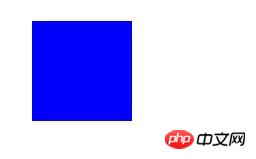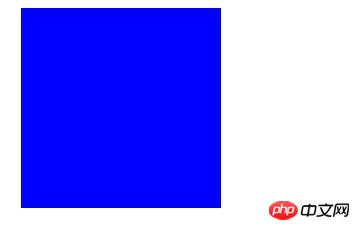 Web Front-end
Web Front-end
 CSS Tutorial
CSS Tutorial
 Detailed explanation of how to use CSS:hover pseudo-class selector (with code)
Detailed explanation of how to use CSS:hover pseudo-class selector (with code)
Detailed explanation of how to use CSS:hover pseudo-class selector (with code)
In order to make the page dynamic at work, front-end developers often add mouse pass and mouse out effects to the page to make the page more attractive. This article will tell you about the hover event in CSS, how to use CSS:hover,and use code to explain how to use CSS:hover to change color. Friends who are in need, please continue reading.
Careful friends will find that hover is used on almost every website. Hover is generally applied to elements such as buttons, logos, and pictures, but sometimes mouseover and mouseout are also used. Events, but JavaScript is more troublesome. It is recommended to use CSS if it can be solved with CSS, which can improve performance. Next, let’s talk about how to use hover in detail.
1. Definition and usage
Definition: hover can add special styles when the mouse moves over the link.
Usage: selector: hover{attribute: attribute value}
For example:
a:hover{background-color:yellow;}
.aa:hover{color:#FFF; background:#0C0;}
Hover-related pseudo-classes:
The :hover selector can be used on all elements, not just links.
:link selector sets the link style of unvisited pages,
:visited selector sets the style of visited page links
:active selector sets the style when you click the link
Note: To produce the desired effect, :hover must be placed after :link and :visited.
2. CSS:hover method example
Instance description: When the mouse enters the div, the div gradually becomes larger. When the mouse moves out, the div gradually becomes larger. Small, back to the original style. This is achieved using the CSS hover event.
HTML part:
<div class="aa"></div>
CSS part:
.aa{
width: 100px;
height: 100px;
background-color: blue;
-webkit-transition: transform 2s linear;
-moz-transition: transform 2s linear;
-ms-transition: transform 2s linear;
-o-transition: transform 2s linear;
transition: transform 2s linear;
}
.aa:hover{
-webkit-transform: scale(2);
-moz-transform: scale(2);
-ms-transform: scale(2);
-o-transform: scale(2);
transform: scale(2);
}Rendering:


The above is the detailed content of Detailed explanation of how to use CSS:hover pseudo-class selector (with code). For more information, please follow other related articles on the PHP Chinese website!

Hot AI Tools

Undresser.AI Undress
AI-powered app for creating realistic nude photos

AI Clothes Remover
Online AI tool for removing clothes from photos.

Undress AI Tool
Undress images for free

Clothoff.io
AI clothes remover

AI Hentai Generator
Generate AI Hentai for free.

Hot Article

Hot Tools

Notepad++7.3.1
Easy-to-use and free code editor

SublimeText3 Chinese version
Chinese version, very easy to use

Zend Studio 13.0.1
Powerful PHP integrated development environment

Dreamweaver CS6
Visual web development tools

SublimeText3 Mac version
God-level code editing software (SublimeText3)

Hot Topics
 What is node in js
May 07, 2024 pm 09:06 PM
What is node in js
May 07, 2024 pm 09:06 PM
Nodes are entities in the JavaScript DOM that represent HTML elements. They represent a specific element in the page and can be used to access and manipulate that element. Common node types include element nodes, text nodes, comment nodes, and document nodes. Through DOM methods such as getElementById(), you can access nodes and operate on them, including modifying properties, adding/removing child nodes, inserting/replacing nodes, and cloning nodes. Node traversal helps navigate within the DOM structure. Nodes are useful for dynamically creating page content, event handling, animation, and data binding.
 What language is the browser plug-in written in?
May 08, 2024 pm 09:36 PM
What language is the browser plug-in written in?
May 08, 2024 pm 09:36 PM
Browser plug-ins are usually written in the following languages: Front-end languages: JavaScript, HTML, CSS Back-end languages: C++, Rust, WebAssembly Other languages: Python, Java
 How to set unknown attributes in vscode vscode method to set unknown attributes
May 09, 2024 pm 02:43 PM
How to set unknown attributes in vscode vscode method to set unknown attributes
May 09, 2024 pm 02:43 PM
1. First, open the settings icon in the lower left corner and click the settings option. 2. Then, find the CSS column in the jumped window. 3. Finally, change the drop-down option in the unknownproperties menu to the error button.
 Graphical steps for setting the default properties of CSS in Visual Studio 2019
May 09, 2024 pm 02:01 PM
Graphical steps for setting the default properties of CSS in Visual Studio 2019
May 09, 2024 pm 02:01 PM
1. Open Visual Studio 2019, find its option settings, and click CSS. 2. Here you can see the technical settings of the following attributes. 3. Now you can set text and fill borders here. 4. At this time, you can also set the floating positioning here. 5. At this moment, you can also set the border and background here to complete the operation. 6. Finally, click the OK button here to set the CSS default properties.
 How to isolate styles in components in vue
May 09, 2024 pm 03:57 PM
How to isolate styles in components in vue
May 09, 2024 pm 03:57 PM
Style isolation in Vue components can be achieved in four ways: Use scoped styles to create isolated scopes. Use CSS Modules to generate CSS files with unique class names. Organize class names using BEM conventions to maintain modularity and reusability. In rare cases, it is possible to inject styles directly into the component, but this is not recommended.
 How to wrap alert in javascript
May 08, 2024 pm 10:00 PM
How to wrap alert in javascript
May 08, 2024 pm 10:00 PM
How to wrap the alert box in JavaScript: use \n escape character: const myString = "First line\nSecond line\nThird line"; alert(myString);Use HTML <br> tag: const myString = " First line<br>Second line<br>Third line"; alert(myString); Set the CSS white-space property: const myString = First line, Second line, Third line; alert(myString);
 How to use less in vue
May 07, 2024 pm 12:09 PM
How to use less in vue
May 07, 2024 pm 12:09 PM
Use LESS in Vue.js to enhance your CSS writing experience. Requires less-loader and less dependencies to be installed. Use the <style lang="less"> block to write LESS styles in your .vue file. LESS provides features such as variables, nested rules, mixins, and operations. But be aware that LESS has been gradually deprecated and it is recommended to use alternatives such as Sass or PostCSS.
 How to register for Bitstamp exchange pro? Is it safe? Is it formal?
Aug 13, 2024 pm 06:36 PM
How to register for Bitstamp exchange pro? Is it safe? Is it formal?
Aug 13, 2024 pm 06:36 PM
How to register BitstampPro? Visit the BitstampPro website. Fill in your personal information and email address. Create a password and accept the terms. Verify email address. Is BitstampPro safe? Authentication required. Enforce the use of two-factor authentication. Most assets are stored in cold storage. Use HTTPS to encrypt communication. Conduct regular security audits. Is BitstampPro legitimate? Registered in Luxembourg. Regulated by the Luxembourg Financial Supervisory Committee. Comply with anti-money laundering and know-your-customer regulations.





